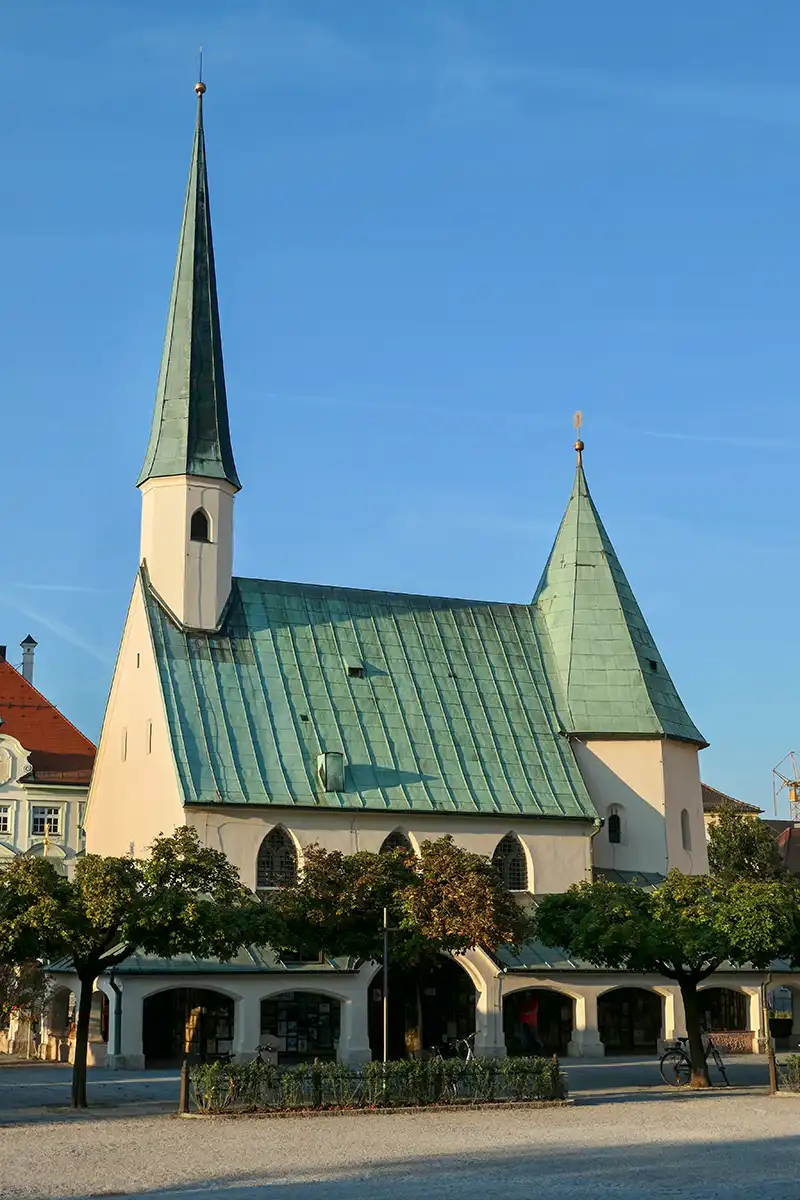Shrine of Our Lady of Altötting
The Shrine of Our Lady of Altötting, located in Bavaria, Germany, is one of the oldest and most significant Marian pilgrimage sites in the German-speaking world, often called the “Lourdes of Germany.” Its history spans over 1,200 years, rooted in both Christian devotion and pre-Christian spiritual traditions. The focal point of the shrine is the Gnadenkapelle (Chapel of Grace), an octagonal structure housing the Black Madonna, a 66 cm limewood statue of the Virgin Mary and Child, carved around 1330 in the early Gothic style, possibly from the Upper Rhine region. The statue’s dark hue, attributed to age and candle smoke, enhances its mystique, drawing pilgrims seeking miracles and spiritual solace.
The site’s Christian history begins around 680 AD when St. Rupert baptized the first Christian duke of Bavaria at Altötting, establishing it as a sacred place. An octagonal baptismal chapel was built, symbolizing rebirth, and a Madonna statue was placed within, likely to Christianize a pre-existing pagan sanctuary. The region was a cultural center in Celtic times, and evidence suggests the site was revered before Christianity. Oral traditions link Altötting to a sacred linden tree, venerated by pre-Christian tribes for the goddess Freya, associated with love and fertility. This connection is reinforced by the Black Madonna’s limewood composition and the presence of centuries-old “Marienlinden” (Mary-linden-trees) in the area, bridging pagan and Christian reverence. In 1980, Pope John Paul II planted a linden tree near the shrine, possibly acknowledging this ancient link.
Pilgrimage to Altötting surged in 1489 after a documented miracle: a mother laid her drowned three-year-old son before the Black Madonna, and he was miraculously revived. Another miracle soon followed, involving a child crushed under a cart, further cementing the shrine’s reputation for divine intervention. Since then, the Gnadenkapelle has been a magnet for pilgrims, with over 2,000 votive tablets lining its arcaded walkway, testifying to answered prayers for healings, fertility, and mundane struggles like workplace challenges. The shrine’s significance deepened with the Wittelsbach princes’ patronage, who promoted it as a center of popular piety. The hearts of Bavarian kings are enshrined here, symbolizing its cultural and spiritual weight.
The pilgrimage tradition remains vibrant, especially during Easter, Pentecost, and the Assumption, with processions, solemn Masses, and rosary prayers. Groups from dioceses like Passau and Regensburg often travel on foot, singing hymns and celebrating Holy Mass at the Gnadenkapelle. The shrine’s enduring appeal lies in its intimate, dimly lit chapel, where the silver-adorned altar and the Black Madonna’s jeweled vestments create a sacred atmosphere. Notable devotees, like Pope Benedict XVI, who gifted his episcopal ring to the Madonna’s scepter in 2006, underscore its importance. Altötting’s blend of pre-Christian roots and Christian miracles continues to draw the faithful, making it a living testament to Bavaria’s spiritual heart.

Martin Gray is a cultural anthropologist, writer and photographer specializing in the study of pilgrimage traditions and sacred sites around the world. During a 40 year period he has visited more than 2000 pilgrimage places in 160 countries. The World Pilgrimage Guide at sacredsites.com is the most comprehensive source of information on this subject.


